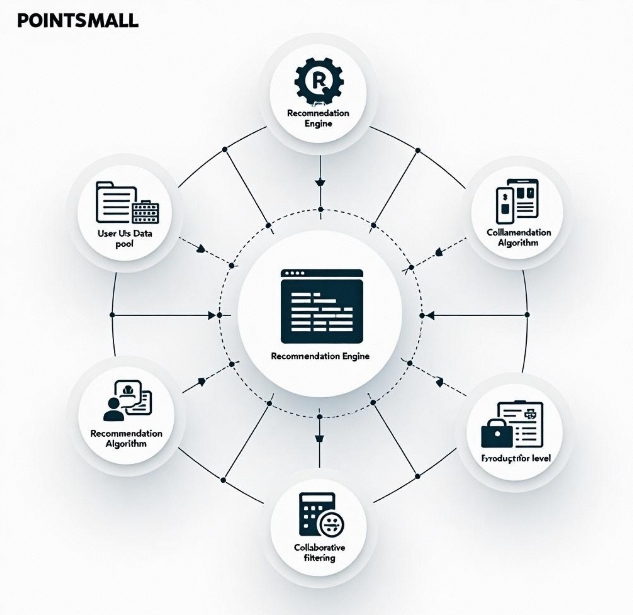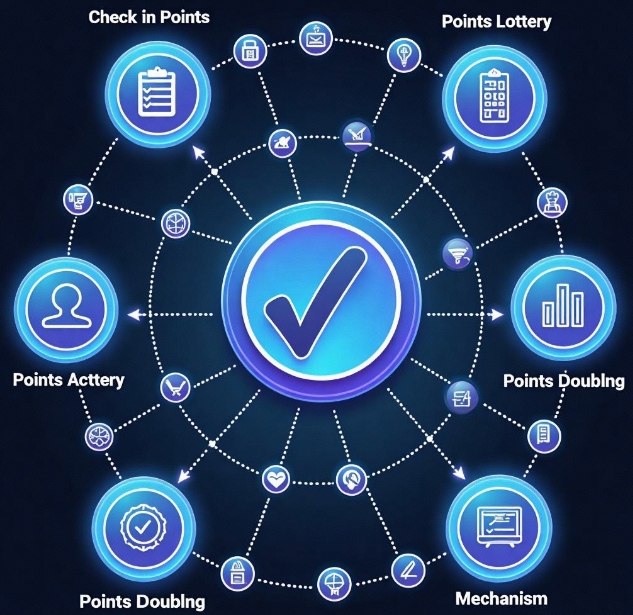How to improve the user experience of a points mall from the user's perspective?
- latest articles
- 1.DApp Development & Customization: Merging Diverse Market Needs with User Experience 2.Analysis of the Core Technical System in DApp Project Development 3.How to achieve cross-chain interoperability in Web3 projects? 4.How does the tokenization of points reconstruct the e-commerce ecosystem? 5.How to Set and Track Data Metrics for a Points Mall? 6.What is DApp Development? Core Concepts and Technical Analysis 7.Inventory of commonly used Web3 development tools and usage tips 8.Development of a Distribution System Integrated with Social E-commerce 9.Six Key Steps for Businesses to Build a Points Mall System 10.What is DApp Development? A Comprehensive Guide from Concept to Implementation
- Popular Articles
- 1.Future Trends and Technology Predictions for APP Development in 2025 2.Analysis of the DeFi Ecosystem: How Developers Can Participate in Decentralized Finance Innovation 3.From Zero to One: How PI Mall Revolutionizes the Traditional E-commerce Model 4.DAPP Development | Best Practices for Professional Customization and Rapid Launch 5.Recommended by the Web3 developer community: the most noteworthy forums and resources 6.How to Develop a Successful Douyin Mini Program: Technical Architecture and Best Practices 7.From Cloud Computing to Computing Power Leasing: Building a Flexible and Scalable Computing Resource Platform 8.Shared Bike System APP: The Convenient Choice in the Era of Smart Travel 9.How to Create a Successful Dating App: From Needs Analysis to User Experience Design 10.From Design to Development: The Complete Process of Bringing an APP Idea to Life
As digital transformation continues to deepen, points malls have become an essential tool for many enterprises to enhance user loyalty and boost user engagement. However, with the diversification of user needs and the continuous rise in experience standards, traditional points malls increasingly reveal issues in user experience: unclear points acquisition, unattractive redemption items, cumbersome operational processes, and poor perceived value of benefits. From the user's perspective, improving the overall experience of the points mall has become a critical factor determining its success or failure.
I. Why User Experience is the Core of Points Malls
The essence of a points mall is to guide users to complete desired behaviors—such as making purchases, checking in, sharing, or participating in activities—through the incentive mechanism of "points." From the user's viewpoint, they invest "behavioral value" in this process and naturally hope to receive equivalent or even greater "rewards" through points redemption. If users experience smooth operations, practical benefits, and convenience while using the points mall, it will significantly enhance their engagement and brand loyalty.
Conversely, poor experiences—such as opaque point values, high redemption thresholds, complex processes, or low-quality products—can easily lead to user churn. Therefore, optimizing the points mall based on user needs and behavioral preferences is essential to winning user favor in a competitive market.
II. Current Pain Points in Points Mall Experience
Based on research and feedback, users commonly face the following major pain points when using points malls:
Unclear Point Value: Users often cannot clearly understand how many points they can earn from specific actions or whether a redemption is "worth it," leading to reduced motivation to use the system.
Weak Product Appeal: Many malls offer limited product variety, infrequent updates, and items that do not align with actual user needs, making it difficult for users to find desirable redemption options.
Complex Redemption Process: Lengthy navigation paths, cumbersome steps, and unclear procedures can cause user experience to plummet, especially if users encounter delays or failures.
Opaque Points Rules: Different activities and user tiers may have varying points rules, but malls often fail to communicate these clearly, resulting in poor user perception.
Lack of Personalized Recommendations: User preferences are not effectively identified, leading to generic recommendations that fail to spark interest.
The key to solving these issues lies in genuinely adopting the user's perspective to redesign the operational logic and interactive experience of the points mall.
III. Five Optimization Directions from the User's Perspective
1. Clarify Points Earning and Usage Mechanisms
First, provide clear and easy-to-understand points explanations when users first encounter the points system. Use graphics, animations, etc., to illustrate "how to earn points," "points values for each action," "points usage scope and validity period," etc., giving users a clear understanding of the entire system.
Simultaneously, include a "Points Details" entry to record each point earned and spent, noting the source and purpose, thereby increasing user trust in the points' value.
2. Enhance Product Appeal and Practicality
Products in the mall should not only be diverse but also "on point." Based on user profiles, establish different product categories, such as digital gadgets, home & lifestyle, membership benefits, experience vouchers, etc. Additionally, introducing brand collaborations or high-value experience vouchers (e.g., for dining, travel, fitness) can enhance the perceived quality of the offerings.
Regularly updating the product pool with seasonal items and limited-time holiday offers can also maintain freshness, encouraging frequent visits and redemptions.
3. Optimize Interaction Flow and Interface Design
Users fear "lag" and "getting lost" during operations. Therefore, the mall interface should be clean and clear, with logical categorization, ensuring users can complete a redemption process within three steps.
Support quick functions like "One-Click Redemption" and "Use Immediately" to improve conversion efficiency. Mobile interfaces should particularly focus on response speed and adaptability to enhance overall smoothness.
4. Introduce Personalized Recommendation Mechanisms
Leverage user data such as historical behavior, interest tags, and redemption records to build user profiles and intelligently recommend more suitable products or activities. For example, recommend parenting products to users interested in baby care, or offer early access to new tech products for tech enthusiasts, thereby increasing click-through and conversion rates.
Furthermore, incorporate social design elements like "You Might Like," "What Others Are Redeeming," and "Leaderboards" to enhance interactivity and a sense of participation.
5. Create Diverse Points Engagement Methods
A points mall should not just be a place to "spend points"; it should be an interactive scene that motivates user behavior. For example:
Task Center: Design simple tasks like "Daily Check-in," "Complete a Share," "Browse 5 Products" to guide users into forming habits.
Points Lottery: Introduce low-threshold lottery mechanisms to increase the fun of using points and the excitement of uncertainty.
Tier System: Design points tiers or membership growth mechanisms where higher tiers unlock more redemption benefits, encouraging sustained user activity.
Limited-Time Activities: Such as "Points Flash Sales" or "Holiday Double Points" events to create a sense of urgency for participation.
These engagement methods not only increase usage frequency but also "amplify" the perceived value of points.
IV. Success Case Studies: Seeing Growth Through Experience
Many well-known brands have achieved significant results in optimizing user experience. For example:
JD PLUS Membership Points Mall has greatly enhanced user loyalty through a rich product pool, exclusive redemption channels, and personalized recommendations;
Alipay Points "Ant Forest" System integrates environmental charity gameplay with points incentives, creating strong emotional resonance among users;
Starbucks Rewards System uses stars to redeem drinks, hidden menu benefits, etc., adding a sense of "ritual" to points and boosting brand loyalty.
These cases demonstrate that if a points mall can transform from a "transaction platform" into a "user interaction field," it will effectively drive user growth and business conversion while enhancing the experience.
V. Conclusion: Experience is King for Sustainable Success
In an era of information overload and scarce attention, users' time and emotions are extremely valuable. For a points mall to truly realize its business value, it must start from the user's perspective and systematically optimize around "simplicity, clarity, fun, and usefulness."
Enterprises should not only focus on short-term conversions driven by points but also build long-term user relationships through experience design. Only by making users feel that every interaction with the points mall is "worth it" can genuine mutual value growth between users and the brand be achieved.
-

How does the tokenization of points reconstruct the e-commerce ecosystem?
With the continuous advancement of internet technology and the gradual prolifera···
-

How to Set and Track Data Metrics for a Points Mall?
With the rapid development of the e-commerce industry, points malls, as a common···
-

Development of a Distribution System Integrated with Social E-commerce
With the rapid development of internet technology, the e-commerce industry has e···

 Blockchain
Blockchain












